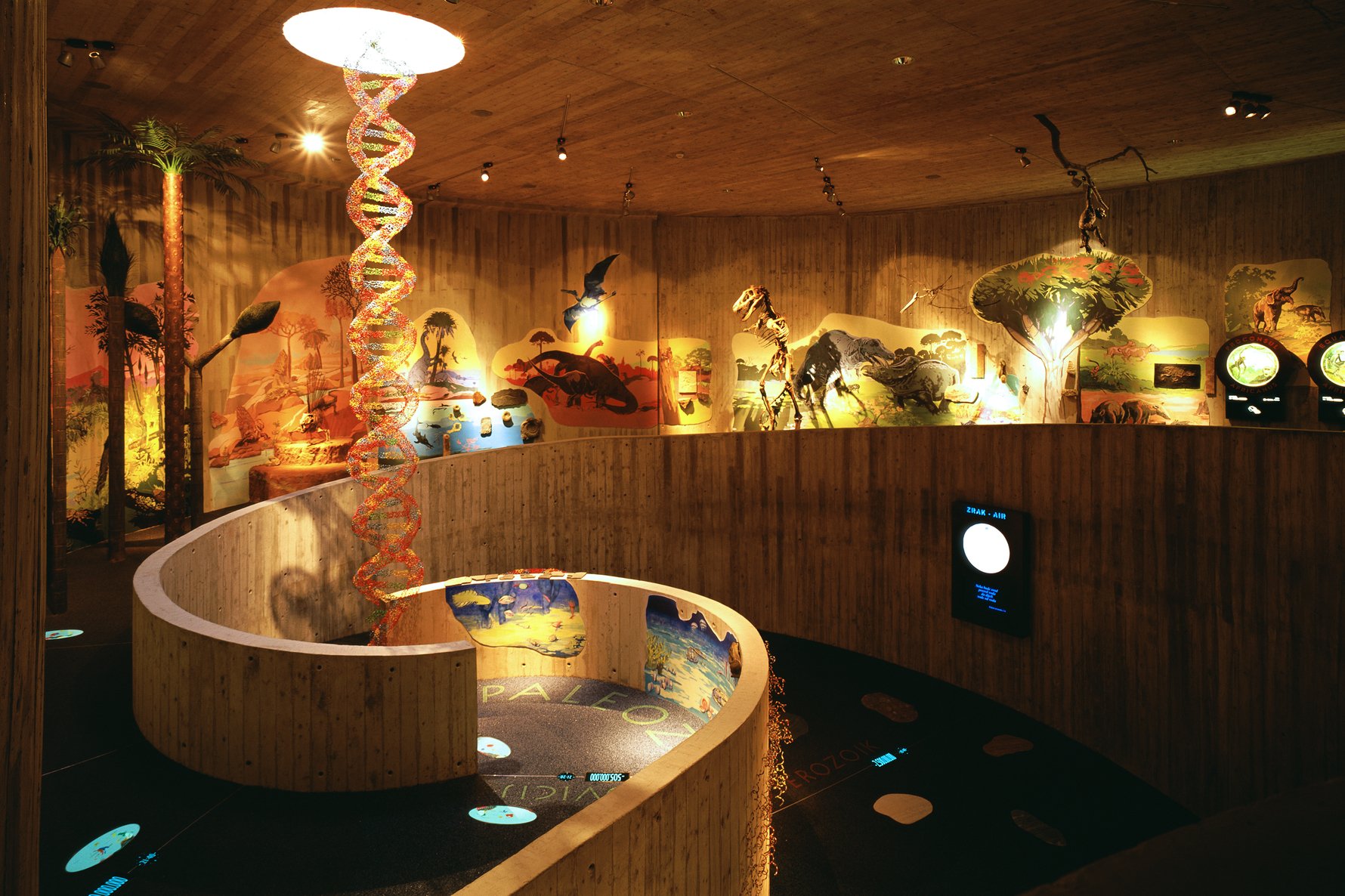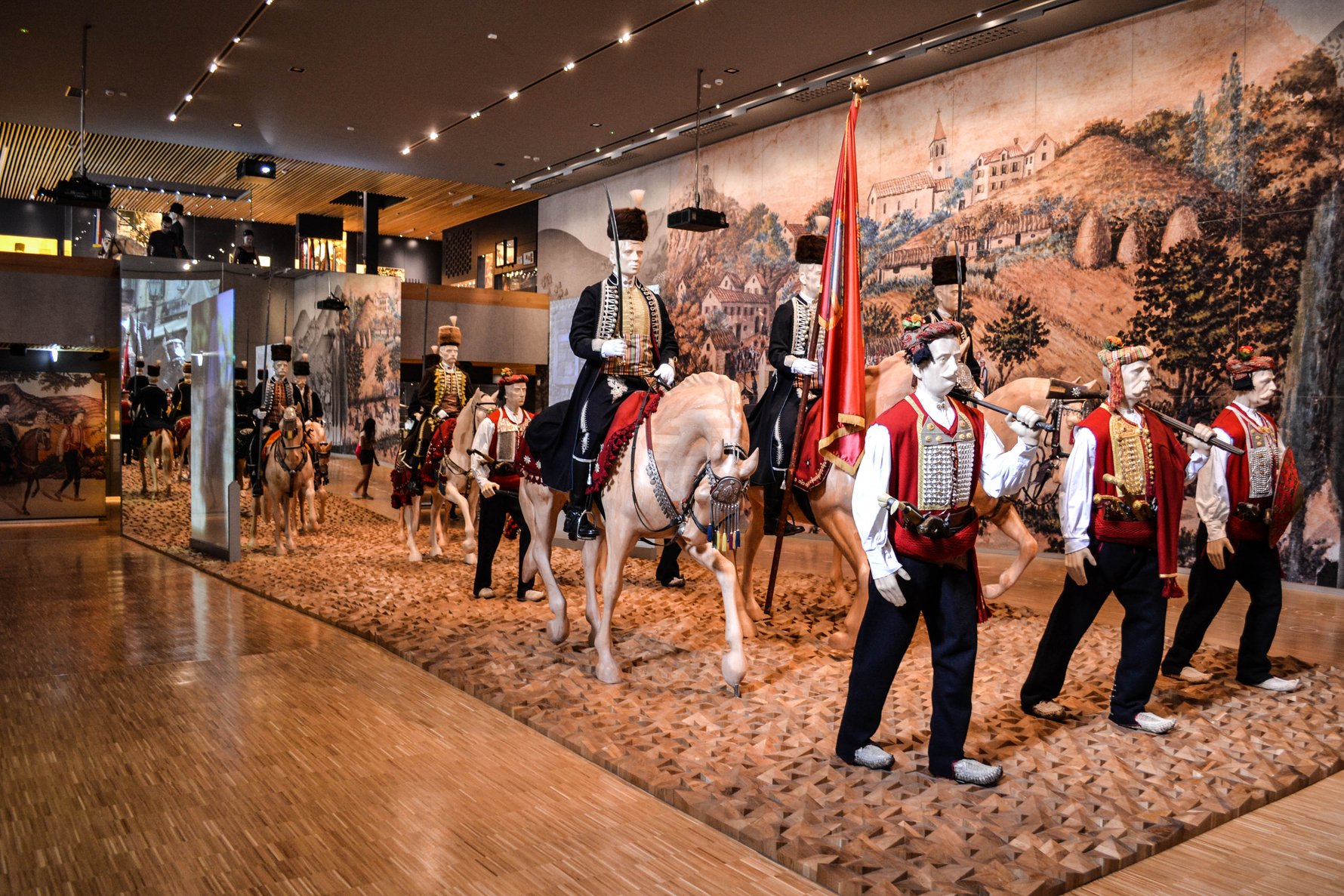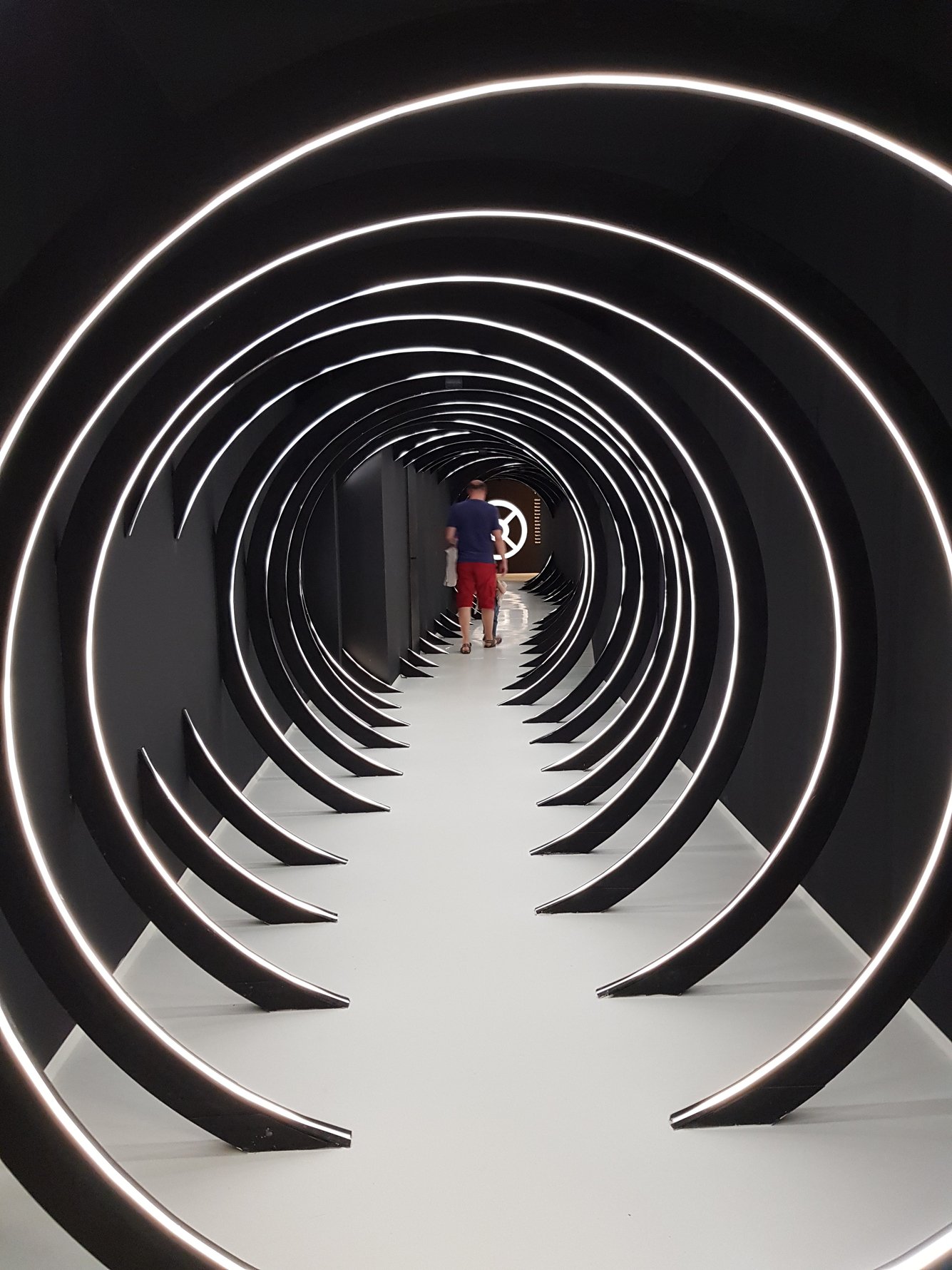The Museum of the Apoxyomenos (Muzej Apoksiomena), Mali Lošinj
Visiting a museum built around a single historical artifact can seem like a risky enterprise: can one work of art really be worth all that fuss, not to mention the relatively high price of the entrance ticket? In the case of Veli Lošinj’s Museum of the Apoxyomenos, the answer is a resounding yes. The display centres on an extraordinarily graceful Graeco-Roman statue of an athlete in the act of cleaning his skin (the Greek term Apoxyomenos means, roughly, “man scraping himself clean”). It was discovered on the seabed near the nearby islet of Orulje by a Belgian recreational diver in 1996. Following years of painstaking restoration it was shown off in the museums of the world before finally coming home to this purpose-built museum on the island where it was found. The display tells the story of the statue’s journey in a sequence of imaginatively designed rooms full of audio-visual content, before revealing the statue itself in a pod-like chamber on the top floor. Consisting of a 21st-century exhibition space inserted inside the shell of a 19th-century palace, the museum is in itself a talking point, and may indeed be the ultimate metaphor for Adriatic culture – where it came from, and where it might be going next. www.muzejapoksiomena.hr
Krapina Neanderthal Museum (Muzej krapinskih neandertalaca), Krapina
Edged out by Homo sapiens, the Neanderthals died out some 40,000 years ago. However there is, the scientists say, a bit of Neanderthal DNA in us all. Best place to meet these distant ancestors is at the Krapina Neanderthal Museum, located in a green vale just outside Krapina, capital of the Zagorje region just north of Zagreb. Consisting of a concrete barrel lurching dramatically out of a hillside, the museum celebrates the discovery of Neanderthal remains on this very site by paleontologist Dragutin Gorjanović Kramberger in 1899. Rather than simply displaying a load of old bones, however, the museum presents an audio-visual display devoted to the progress of life on earth and the emergence of the first hominids. The museum culminates in a disarmingly lifelike family group of waxwork Neanderthals, showing that, far from being the primitive cave dwellers of popular imagination, they knew how to fashion tools, weave clothes and carry out basic medical procedures. As a well-thought-out, supremely educative presentation of how evolution is believed to have worked, it is a pretty unique institution, and one that is likely to work its fascination on visitors of all ages and interests.www.mkn.mhz.hr

Museum of the Vučedol Culture (Muzej vučedolske culture), Vukovar
The Danube-riverbank town of Vukovar is one of the rising destinations of Croatian tourism, and this dramatically situated museum is one of the main reasons why. Jutting out of a hillside at Vučedol just southeast of town, the museum occupies one of southeastern Europe’s richest archeological sites. The discovery of brightly decorated pottery and other artefacts dating to the third millennium BC at this site led to adoption of the term Vučedol Culture to describe the civilization taking shape at that period. A settled community of farmers and copper-smelters, the Vučedol folk produced pottery decorated with highly distinctive geometric patterns and pictograms. Many of the pictograms are thought to refer to star constellations and their relationship to the changing agricultural seasons. Featuring replicas of Vučedol clothing, a mock-up of a Vučedol-era house, and computer-animated glimpses of how the local settlement looked, the museum takes us right into the heart of life as it might have been lived, 5000 years before our time.www.vucedol.hr
Museum of the Homeland War (Muzej domovinskog rata), Turanj, Karlovac
The mid-Croatian town of Karlovac was on the front line during the Homeland War of 1991-95 and it is fitting that this national museum devoted to the conflict is located here. More precisely, it lies just off the main road to the Plitvice Lakes in the suburb of Turanj, the place where the main enemy advance was repulsed. The display is housed in an imaginatively renovated nineteenth-century barracks, first built by the Austrians and then pressed into service in 1991 by Karlovac’s Croatian defenders, who ironically dubbed the place ‘Hotel California’. Encased in a glass shell, the barracks contains a modern multi-media display detailing the military operations that took place here together with an account of what life was like for the local civilian population. Alongside a wealth of military hardware inside the museum there is a stirring display of artillery pieces, aircraft and armoured cars on the lawn outside.www.gmk.hr
Museum of the Sinj Alka (Muzej Sinjske Alke), Sinj
A museum devoted to a sporting event might at first glance seem to be a bit too specialized to be deserving of general fascination – unless the event in question happens to be the Alka, the annual test of horsemanship that takes over the inland Dalmatian town of Sinj every August. A surviving example of the knightly horse-games that date back to the distant Mediterranean past, the Alka brings together compelling themes of local identity, heritage and history – indeed it is through the Alka, more than anything else, that one might begin to understand the history and culture of this part of Croatia. The contest involves riders taking turns to charge on locally-reared horses towards a ringed metal target hanging from a wooden gantry, which they tempt to spear with their long lances. A supreme test of skill and poise for both horse and rider, it is held in celebration of a victory over the Ottomans in 1715, when the people of Sinj finally repulsed an enemy attack on August 15, the holy day associated with the Assumption of the Virgin Mary. The museum captures the drama and significance of the event with a dazzling display of riders’ costumes and an engrossing account of the Alka’s historical origins. After a visit here you’ll probably be itching to get saddled up yourself.www.alka.hr

Rijeka City Museum (Muzej grada Rijeke), Rijeka
The port city of Rijeka’s transformation into a post-industrial cultural mecca took another step forward with the opening of the City Museum’s brand-new permanent exhibition. The collection’s new home is the lovingly restored late-Baroque building known as the Šećerana or “sugar palace”, thanks to its former status as the administration building of a sugar refinery. It’s with this museum that Rijeka finally gets to tell its fascinating story; a story based on themes of industry, technology and popular culture. We get to see the history of the torpedo, the technological wonder perfected by Austro-English engineer Robert Whitehead and subsequently sold to navies around the world; as well as re-visiting the punk and new-wave traditions that made Rijeka a unique island of alternative culture in the late twentieth century. All of the things, in other words, that make a great city tick.www.muzej-rijeka.hr
Narona Archeological Museum (Arheološki muzej Narona), Vid, Metković
Set amidst the rushes and irrigation channels of the Neretva delta, the hillside village of Vid is home to one of Croatia’s most exciting archeological finds. It was here that first-century-BC Roman market town of Narona was unearthed, together with a wealth of artefacts offering revealing insights into the everyday life of the period. Opened in 2007, the museum takes the form of a swish modern pavilion built right above the archeological site itself. Inside, steel and glass walkways allow visitors to look at the excavations from above. One undoubted highlight is the Augusteum, a temple to the Emperor Augustus flanked by 14 statues thought to depict members of the ruling family.www.a-m-narona.hr
Barban Multimedia Centre (Multimedijalni centar Barban), Barban
Sinj is not the only place to have preserved an ancient contest for horse and rider. The Istrian village of Barban still celebrates its equine traditions with the annual Trka na prstenac or “Race for the Ring”, in which locals and their steeds attempt to spear a specially-designed ring on the end of a long lance. The age-old ritual is celebrated in this brand-new multimedia Visitors’ Centre, where video films and 3-D technology help you to “experience” the race yourself. Entrance to the display is through a dramatic tunnel of lighted hoops; elsewhere costumes, photographs and local artefacts help bring out a sense of place. barban.hr/centar-za-posjetitelje-barban
Virovitica Town Museum (Gradski muzej Virovitica), Virovitica
The recently revamped Virovitica Town Museum is a great example of how to make a regional collection into something that captivates and involves a wider audience, showing off periods of history that we can all relate to while devoting equal attention to the customs, costumes and crafts associated with the place itself. A lot of the museum’s success is due to the presentation, with a visually involving approach enhanced by dramatic lighting. The museum is housed in the Pejačević Palace, a beautifully-restored late-baroque mansion bequeathed to the town by Habsburg-era aristocracy. Hitherto somewhat removed from the main tourists routes, this museum will hopefully ensure that Virovitica will be getting more attention from visitors in future.www.gmvt.com.hr
The Dutch House (Holandska kuća), Sisak
Your first reaction might be what is a Dutch House doing in Sisak? This spectacularly restored nineteenth-century grain warehouse got its name because of its appearance; with its stepped façade, it looks jut like something that you would expect to see hovering above a canal in the Low Countries. Inside is a multi-media display dedicated to Sisak’s industrial heritage of oil refining and metalworking, and an art gallery with regular contemporary art exhibitions. One unique feature of the museum – indeed a must for all fans of vintage technology – is the Velimir Kraker collection of old gramophones and radios.www.hoku.hr


Comments